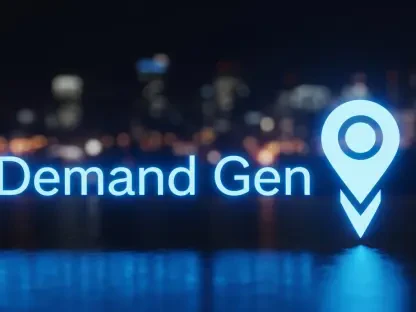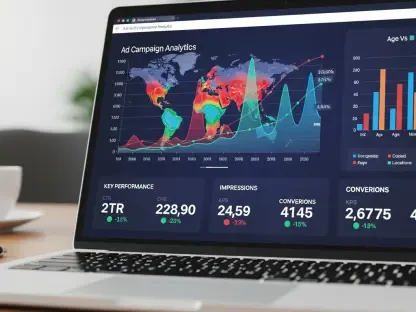In today’s digital landscape, standing out in search results is more challenging than ever, with over 8.5 billion searches conducted daily on Google alone, making it a daunting task for businesses and content creators to adapt to rapid technological shifts. With the integration of artificial intelligence into search algorithms, this evolving environment raises critical questions about how traditional Search Engine Optimization (SEO) intersects with AI-driven search optimization, and what strategies can ensure continued visibility. The insights from a Google executive shed light on this dynamic, offering a roadmap for navigating these changes.
The purpose of this FAQ is to explore the significant overlap between SEO and AI search optimization, breaking down complex concepts into clear, actionable guidance. Readers will gain an understanding of how foundational SEO principles still apply in an AI-driven world, alongside emerging tactics to meet new demands. This article addresses key questions surrounding content relevance, reputation, and practical tools to stay ahead in search rankings.
By delving into these topics, the goal is to equip businesses, marketers, and creators with the knowledge needed to adapt their online strategies. Expect to uncover how AI interprets user intent differently, why public relations plays a role in AI recommendations, and which resources can provide a competitive edge. This comprehensive overview aims to bridge the gap between established practices and innovative approaches in search optimization.
Key Questions or Key Topics
What Is the Overlap Between SEO and AI Search Optimization?
The relationship between traditional SEO and AI search optimization is a critical starting point for understanding modern search dynamics. Both approaches share a common foundation: the need to deliver helpful, relevant content that aligns with user intent. As search engines evolve to incorporate AI technologies like AI Overviews, the principles of creating clear, valuable information remain paramount for visibility across all formats.
AI systems often mimic human search behavior by pulling data from web results, knowledge bases, and real-time information to answer queries. This means that websites already optimized for user-focused content are well-positioned to appear in AI-driven responses. For instance, a blog post addressing a specific “how-to” question with detailed steps can rank well in both traditional results and AI summaries if it directly meets the searcher’s needs. The overlap lies in prioritizing quality and specificity, regardless of the technology behind the search.
Evidence from Google’s perspective reinforces this synergy, as the emphasis on user satisfaction drives both SEO and AI algorithms. While the core tactics remain consistent, the nuance comes in recognizing that AI often tackles more complex or personalized queries. Businesses should therefore maintain strong SEO practices while fine-tuning content to address intricate user scenarios that AI prioritizes.
How Does AI Search Handle Complex Queries Differently from Traditional SEO?
AI search introduces a distinct shift in addressing user queries, particularly those that are nuanced or multifaceted. Unlike traditional SEO, which often focuses on straightforward keyword matching for ranking, AI systems are designed to interpret deeper intent behind searches like purchase decisions, personal advice, or detailed guides. This capability stems from AI’s ability to process context and draw connections across diverse data sources.
For content creators, this means adapting to a broader spectrum of user needs beyond simple informational searches. A practical example is optimizing for long-tail queries that reflect conversational language, such as “best laptop for graphic design under $1000 with reviews.” AI can parse such detailed requests and recommend content that matches the specific criteria, pushing creators to develop in-depth, targeted material that answers every aspect of the question.
The challenge lies in studying how users interact with AI tools to uncover emerging patterns. By focusing on comprehensive answers and structured content, businesses can improve their chances of being featured in AI responses. This adaptation highlights a key difference: while SEO often targets broad visibility, AI optimization requires precision in addressing highly specific user contexts.
Why Is Reputation Important for AI Search Optimization?
Reputation emerges as a pivotal factor in AI search optimization, influencing how algorithms perceive and recommend content. Being cited or mentioned in authoritative sources, such as prominent business rankings or widely read publications, can significantly enhance a website’s credibility. This aspect underscores a unique intersection where public relations efforts directly impact digital visibility in AI systems.
The concept of “PR for AI” suggests that businesses should actively seek recognition in reputable online spaces to build trust with algorithms. For example, a small business featured in a top industry list may find its content prioritized by AI when users seek related recommendations. This reputational signal acts as a digital endorsement, amplifying the likelihood of being surfaced in AI-driven results.
This focus on reputation extends beyond mere backlinks, emphasizing the quality and context of mentions. Companies are encouraged to cultivate a strong online presence through strategic partnerships and media coverage. Such efforts not only appeal to human audiences but also position content favorably within AI’s evaluation framework, marking reputation as a cornerstone of modern optimization strategies.
What Tools Can Help Businesses Adapt to AI-Driven Search Trends?
Navigating the AI-driven search landscape requires leveraging practical tools to understand shifting user behaviors and search patterns. Resources like Google Trends, Google Ads, and Search Console offer invaluable insights into trending topics, keyword performance, and user intent. These platforms enable businesses to identify gaps in content and align their strategies with current demands.
For instance, Google Trends can reveal spikes in specific search terms, allowing marketers to create timely content that addresses emerging interests. Similarly, Search Console provides data on how users find a website, highlighting opportunities to refine content for AI queries. These tools empower creators to move beyond guesswork, basing decisions on concrete analytics that reflect real-time search dynamics.
Adopting such resources is a proactive step toward staying relevant as search technology advances. By regularly analyzing data from these platforms, businesses can anticipate user needs and tailor their output accordingly. This data-driven approach ensures that content remains aligned with both traditional SEO goals and the evolving expectations of AI algorithms.
Summary or Recap
This FAQ distills critical insights into the intersection of SEO and AI search optimization, highlighting their shared principles and distinct challenges. The overlap lies in the enduring importance of high-quality, user-centric content, which serves as the bedrock for visibility in both traditional and AI-driven search results. Additionally, reputation and context play significant roles in how AI evaluates and recommends websites, introducing new considerations for public relations strategies.
Key takeaways include the need to address complex queries with detailed, targeted content and to leverage tools like Google Trends for actionable insights. Businesses must balance adherence to proven SEO tactics with innovative approaches to meet AI’s nuanced demands. These dual strategies ensure sustained relevance in an ever-changing digital environment.
For those seeking deeper exploration, resources such as Google’s official blog or industry publications offer updates on search algorithm changes and optimization best practices. Engaging with these materials can provide further clarity on adapting to technological advancements. Staying informed is essential for maintaining a competitive edge in search visibility.
Conclusion or Final Thoughts
Reflecting on the discussions held, it becomes evident that the digital search realm demands a blend of continuity and adaptation from businesses and marketers. The insights shared illuminate how foundational SEO practices retain their value, even as AI introduces fresh layers of complexity to optimization efforts. This balance strikes a chord, emphasizing that success hinges on evolving without abandoning proven methods.
Looking ahead, the actionable next step involves integrating reputational strategies with content creation, ensuring that online presence resonates with both human audiences and AI algorithms. Businesses are urged to prioritize building authority through credible mentions while harnessing analytical tools to refine their approach. This forward-thinking mindset promises to position them favorably in search results over the coming years.
As a final consideration, it is worth pondering how these evolving strategies apply to individual or organizational goals in the digital space. Exploring ways to align content with AI-driven user expectations could unlock new opportunities for engagement and visibility. Taking small, consistent steps to adapt to these changes is seen as the pathway to long-term success in an AI-influenced search landscape.









